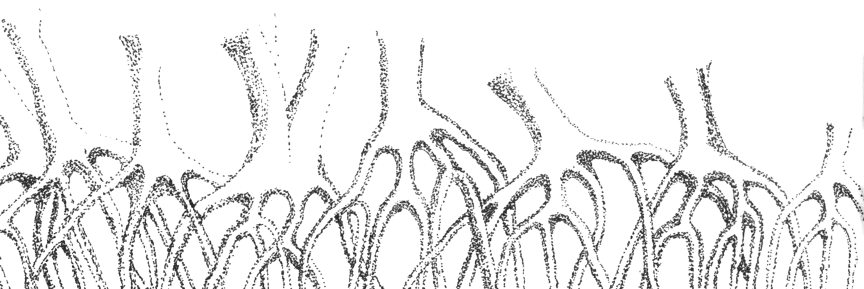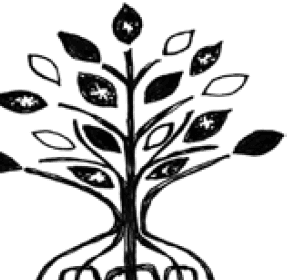The Rarest Birds
Yong Shu Hoong
When I was invited to contribute to the Festschrift (I had to look up the word!) for the 70th birthday in 2023 of Filipino doyenne of poetry Marjorie Evasco, a song by British singer Alison Moyet, ‘The Rarest Birds’ (from her 2017 album, Other), came to mind. It’s not that I believe Marjorie belongs to a species so unadaptable to the changing environment that she is forced into extinction, but rather, someone like her comes like a comet that one would be extremely fortunate to witness, just once in his lifetime, its bright line written across the sky.
One day in December 2021, shortly after the Festschrift invitation, I was taking a morning walk through the Singapore Botanic Gardens and there seemed to be a buzz of excitement in the air I couldn’t quite place. A man carrying a professional-looking camera with a long zoom lens was animatedly discussing something just in front of me with a staff of the Gardens, before hurrying towards me and walking quickly past. I never figured out what was going on until I read in the news the next day of a first known sighting of a cinereous vulture, also known as the monk vulture and Eurasian black vulture, in Singapore. Found not just in Asia but also in Europe and Africa, it boasts a body length of more than one meter, a wingspan of around three meters and a maximum weight of 14 kg. I did not see the vulture, currently classified as a nearthreatened species, that morning in the Gardens, as others did, so I can only imagine how majestic it would look in flight.
I first knew of Marjorie as a close friend of a friend, my compatriot poet Alvin Pang (I believe they met one year in the University of Iowa’s International Writing Program). In 2004, Pang, another Singapore poet Toh Hsien Min and I had organised the one and only edition of Wordfeast. She was one of the featured authors we had invited to this poetry festival supported by our main sponsor, South East Community Development Council. Accordingly, all the venues for the festival’s various events were held within Singapore’s South East District, including neighborhoods like Joo Chiat, Marine Parade, and Bedok. In terms of accommodation, the international poets who hailed from countries like the United States, Australia, Hong Kong and the Philippines were hosted at the holiday chalets in East Coast Park.
Memories blur with time, and I no longer remember what possessed me to undertake the burden of the festival’s coordination jointly with my co-conspirators, while I was busy working in a full-time job. There was a fleeting recollection of dropping by the chalets quite late at night, after a particular day’s events were over, seeing Marjorie and some other poets clad in casual wear before they retired for the night. Did we walk along the beach and partake in an impromptu reading among us? As I’ve said, memories blur with time. But I do remember, during the festival, moderating a reading at a shophouse on East Coast Road, where Marjorie was among that evening’s featured poets including Malaysia’s Eddin Khoo, the Philippines’ Dinah Roma, Hong Kong’s Madeleine Marie Slavick and Singapore poet Heng Siok Tian.
I think Marjorie would be tickled to know that I can even remember the event’s theme of ‘Hybridity’. It was on a Saturday, 17 January 2004, starting at 7 pm. The shophouse restaurant’s name was Nonnie, and attendees paid $10 per entry, which included dinner consisting of Sambal Kangkong, Nyonya Chap Chye, Ayam Pongteh (chicken stew), Sambal Terung (eggplant), Sweet & Sour Fish, Bakwan Kepiting (meatball soup), Nyonya Mee, steamed white rice, teh tarik and barley drink. I must confess that it didn’t all boil down to me having a photographic memory; I checked online and the Wordfeast website was still alive after all this time. (Nonnie’s former address is now occupied by a Thai restaurant.)
Since 2004, Marjorie and I have continued to cross paths, virtually or in person, over the years. She once mentioned to me the Silliman University National Writers Workshop and suggested I should visit as a guest panelist, but that occasion never materialized. Then in September 2016, I went on my first trip to the Philippines organized by my publisher, Ethos Books, and did readings in Manila with fellow writers, Aaron Lee and Noelle Q. de Jesus. I took the chance to meet with Marjorie again. And it was a very happy reunion, played out in the opulent finery of Sofitel Philippine Plaza Manila – in particular, amid an all-you-can-eat buffet at the Spiral restaurant. I still salivate when I think about that dinner, even though I should reserve my appetite entirely for the book she gave me: Fishes of Light (Peces de Luz): Tanrenga in Two Tongues (2013) by Marjorie Evasco and Alex Fleites (with art by Chua Keng Keng). Then in 2021, I invited her to take part in the Proust Questionnaire, where she answered 17 questions for Quarterly Literary Review Singapore, an online journal where I was one of the editors. For question No. 17, “What would you write on your tombstone?”, she replied, “I’d like the last four lines of my poem ‘Is it the Kingfisher’ to be engraved on my tombstone: Seawaves sing it, the kingfisher flies in it, this island is rooted in it. Desiring God is transparent blue – the color which makes our souls visible.”
Do I now think of Marjorie as a kingfisher in blue? In an article I read on The Guardian website about the biodiversity movement Re: wild’s global project called Search for Lost Birds, a call was put forth to birdwatchers around the world to keep an eye out for the Top 10 Most Wanted list of birds believed to have been lost to science. The list of birds that had no documented sighting in the wild for at least a decade (though none has been classified as extinct) includes the Himalayan quail, last seen in 1877 in India; dusky tetraka, last documented in 1999 in Madagascar; Santa Marta sabrewing, last seen in 2010 in Colombia; Negros fruit-dove, last seen in 1953 in the Philippines; and Siau scops owl, last seen in 1866 in Indonesia. Reasons for their disappearance include (according to the article) climate change, habitat loss, invasive species and the activities of logging, mining and hunting.
What makes a poet rare? It’s a question I wouldn’t dare to try to answer. Maybe I know too well that there isn’t a clear answer, or an answer at all.
Then, in 2021, when an anthology A Given Grace: An Anthology of Christian Poems, edited by Eric Francis Tinsay Valles and Desmond Francis Xavier Kon ZhichengMingdé, was launched, I realised Marjorie was among the contributors, as I was one.
In the poem ‘Rehearsal’, included in the online anthology, she depicts a pandemic scene: “Everywhere city streets were emptied – / Townhalls, churches, theatres, shopping centers, / Schools – closed down as hospitals spilled over / With the sick and dying. When the April moon rose / Full over the city, she looked out of her balcony / And saw how it could look like this when humans / Disappeared entirely by their own undoing…”
Was it also our human undoing that birds disappear? And what of our undoing that made poets disappear? These are thoughts probably too dark to contemplate in a Festschrift. But when we see a rare bird or a rare poet, we celebrate wholeheartedly the fact that we are lucky enough to witness the appearance – as ephemeral as it may be, like in a dream. Moyet’s song, for all it’s worth, might not even be about birds – or poets, for that matter. But drunk on the melody sung in her distinctive voice, I can forget what the song is about. And think of a poet, rare and precious, that I have had the pleasure to know. Marjorie is one of a kind, yet also one of quite a few kind and fine poets I’ve encountered in my life so far, so I’ve been blessed more than twice over. Moyet sings, with all her heart, “Skip a grace note on your heel / To whichever hymn you please / For the rarest birds are these…” and at the ending of the song, “It’s only ground that they see / For the rarest birds are these / To whichever sky they please.” It is only right that I look to the sky and give thanks.








